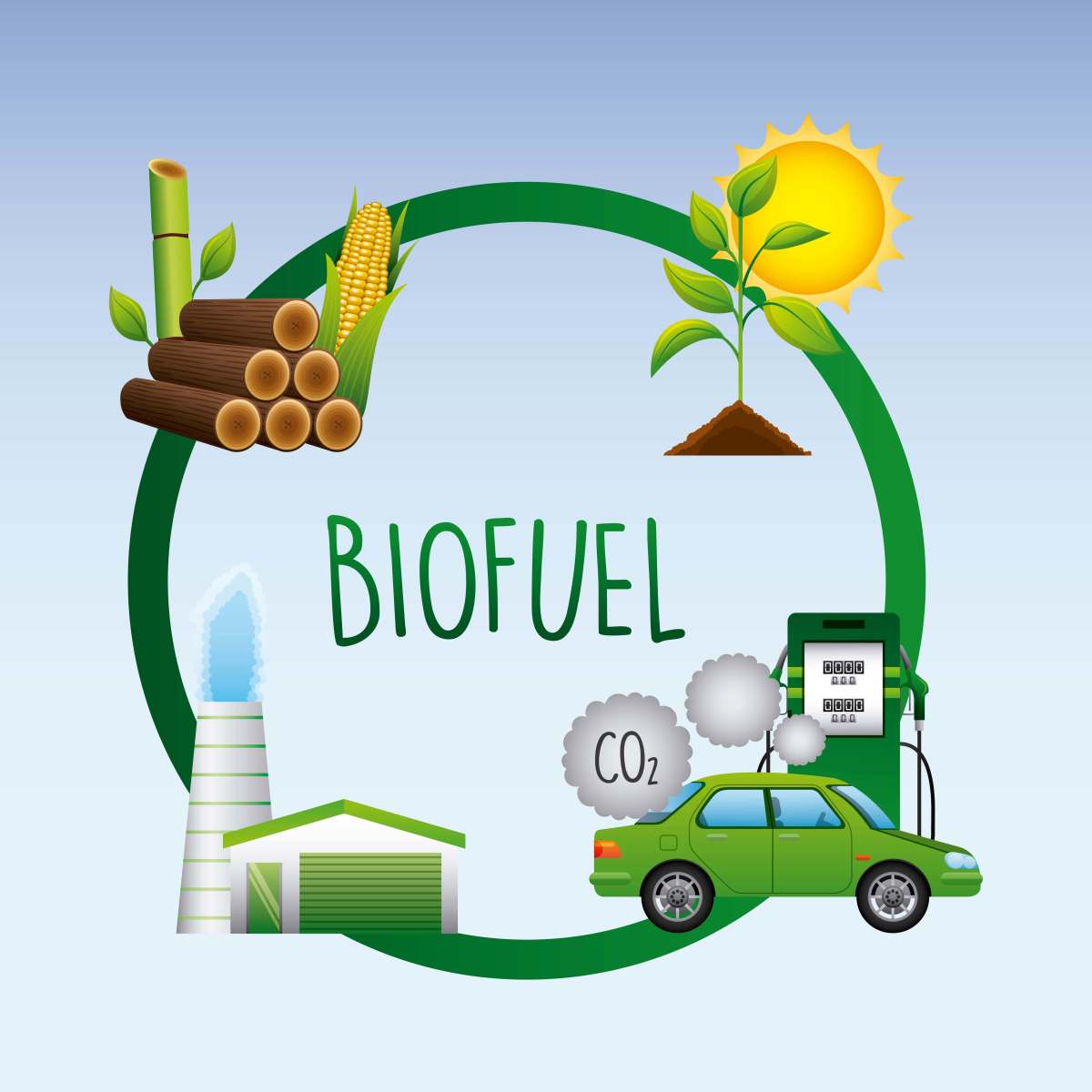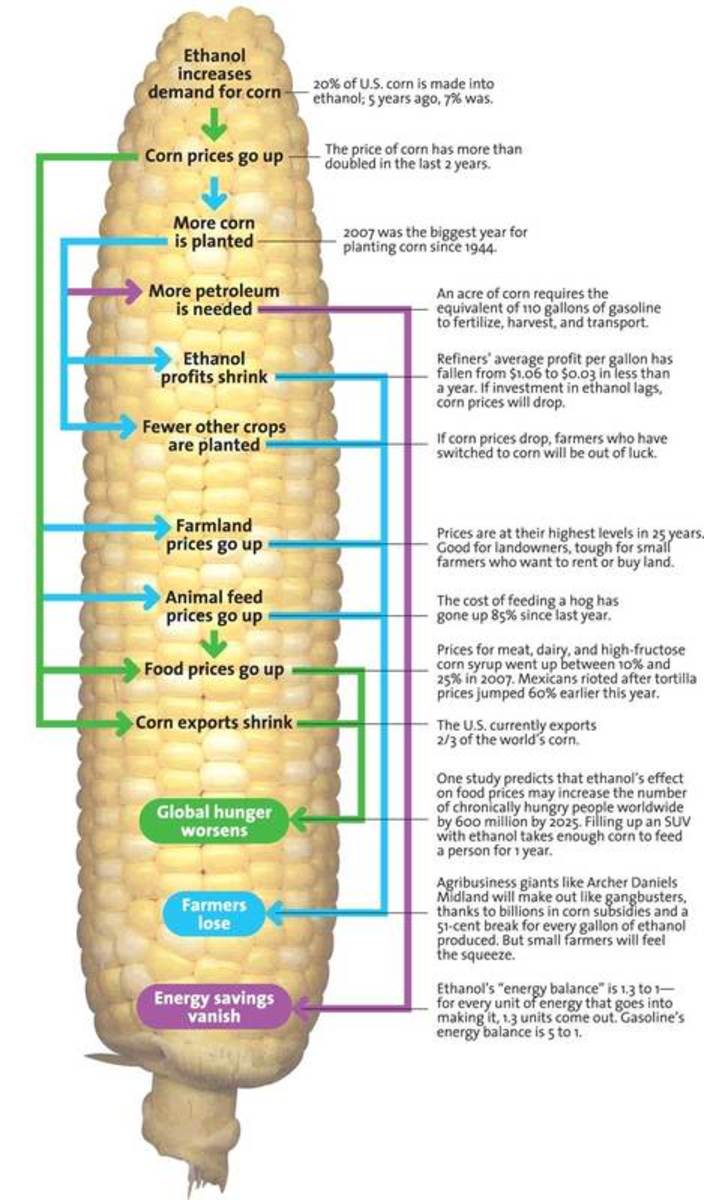My Short Essay On Alternative Fuels
Alternative Fuels Essay
Alternative Fuels
In the United States it is estimated that 49% of all petroleum products used are imported from foreign sources.(EIA) This trend is terrible for our economic standing in the world. By importing nearly half of our petroleum, we have a direct need that must be satisfied. Foreign and domestic sources of fuel can take advantage of this by controlling production to best suit their needs and ledger. There are ways to combat this, and reduce the need for uncontrollable foreign based sources. A very promising way to defend “The Land of Opportunity” from opportunistic foreign fuel sources is to advance renewable fuel sources such as biodiesel, ethanol, and biogas. (EERE)
Biodiesel is a promising fuel source that could have large scale effects. Biodiesel is a renewable alternative fuel that is used to replace diesel fuel in some scenarios. It can be made from a large variety of animal fats and oils and it can, without extensive modifications, be used to fuel many light to heavy-duty vehicles. Biodiesel is made in many different mixtures that are used for different reasons. (EERE)
Light mixtures such as B2 (2% biodiesel, 98% petro diesel) and B5 (5% biodiesel, 95% petro diesel) are currently being used in diesel, and require no modifications to current engines. They are a slight way to help with the energy crisis. While not as much of a help as higher rated mixtures, these mixtures can be mixed and sold as normal diesel fuels. They offer more benefits than just that of fuel, they are great lubricants. This lubrication helps to extend the life of the engine running the fuel. These mixtures are already in use today. These mixtures are used as 2% to 5% mixtures respectively. B20 (20% biodiesel, 80% petro diesel) is a common mixture of biodiesel. It is used because a pure biodiesel will harden when the weather gets cold. A 20% mix greatly reduces petroleum consumption. B20 biodiesel can be found at limited fuel stations currently, but development of infrastructure is happening rapidly. B100 (100% biodiesel) is completely biodiesel. B100 biodiesel is more difficult to find because it needs to be kept warm to stop it from jelling. Jelling is when the fuel hardens. If a fuel hardens in a diesel engine at rest, costly repairs are often necessary. It can also be difficult to use because engines must be retrofitted with biodiesel-compatible hoses,seals, and gaskets. Diesel engines run well on biodiesel because the cetane level in biodiesel is higher than in that of petroleum based diesel. Cetane is the combustion quality of the diesel fuel that is being used. All of these mixtures help reduce reliance on foreign oils. (EERE)
Biodiesel is a clean burning alternative to petroleum diesel. It increases energy security ( the independence from other nations as sources of fuel) by reducing the need for foreign made petroleum oils. Biodiesel also has increased lubrication qualities compared to petroleum diesel. Less flammable, it is safe to transport and if spilled is nontoxic and will not harm anything or anyone. Although biodiesel has few drawbacks, the major one is that the fuel can harden in highly concentrated mixtures if not kept at warm temperatures. This causes very costly repairs. (EERE)
Ethanol is another highly successful alternative fuel that the United States can utilize to help with the petroleum consumption problem at hand. Ethanol is a renewable fuel which is made using various plant materials, these are broken down and called “Biomass” collectively. Ethanol has the same chemicals that are commonly found in alcoholic beverages (C2H5OH). Ethanol is commonly blended with gasoline to help oxygenate the air to reduce greenhouse gasses. Ethanol increases the octane rating of fuel. An interesting fact is that before gasoline became as readily available as it is now, early automakers believed that ethanol would become the primary fuel source. It is interesting to think about how vehicles would be made today if ethanol was the primary fuel source. The logic behind using ethanol is very rational. It was not used because of the petroleum drilling techniques and the abundant sources of crude oil in that time period. (EERE)
Ethanol comes in various blends. Each blend has different advantages and drawbacks. There are many different blends but the most common are E85, E15, and E10. Each blend has a percentage that represents the ethanol content in the fuel. E85 has 85%, E15 has 15%, and E10 has 10%. As you get more ethanol in a fuel the octane rating rises. Octane ratings refer to the amount of combustion pressure required to detonate the fuel mixture. A higher octane rating means that the fuel needs to be more forcefully pressurized to detonate. Octane ratings are found on the buttons on gasoline pumps as you press them to decide what fuel to put in your vehicle. (EERE)
E85 is a high ethanol content fuel. E85 (flex-fuel) is used in flex-fuel vehicles. The reason that a pure ethanol fuel (E100) is not commonly used is because it tends to harden during cold weather. Like pure biodiesel this causes costly repairs if it solidifies in the engine. Injectors, fuel lines, and parts of the valve train could become partially or fully blocked. This problem is corrected by using a slight gasoline blend. E85 contains 85% ethanol and 15% gasoline. The gasoline helps to keep the fuel from solidifying. High content ethanol blends have less energy per gallon than pure gasoline but the price paid per mile driven is equalized by lowering the cost for the ethanol fuel, which gets less fuel economy. Simply, the fuel contains less energy, but you can buy more of it than you can of gasoline for the same price. The concept is that for 1 dollar you can buy more ethanol than gasoline, but it is proportional to how much less fuel economy that ethanol gets, so you are paying the same price for the same distance driven. (EERE)
E15 and E10 blends of ethanol are used commonly. E10 is already used in general gasoline to raise octane ratings and for other benefits. Low level blends are legal to be sold as gasoline. They are considered similar under law by the government. All ethanol is produced from two sources cellulosic and sugar/starch based raw materials. (EERE)
Ethanol is produced from sugar or starch based sources the easiest. Ethanol is made by a complex form of fermentation, which makes it into a form of alcohol. Corn and sugarcane are the most common source of ethanol made by sugar or starch based materials. The ethanol made is a 200-proof alcohol that is then denatured, normally with gasoline to make it unfit for human consumption. The ethanol can then be fit for shipping and use. The only problem with this type of ethanol production is that if severely affects food prices by more food sources being used for ethanol. This can make food prices fluctuate. (EERE)
The second way ethanol is produced is by cellulosic materials. These materials are much more difficult to break down because they have harder cell walls. They must be broken down so that they can be easily fermented and made to produce ethanol. Examples of materials used to produce ethanol include paper products, stems, stalks, leaves, and other byproducts of food production. This type of ethanol production is extremely promising because the using the byproducts of the food and forestry industries can make our use of resources extremely efficient. This uses wastes to fuel an industry. (EERE)
Biogas is another promising energy prospect. Biogas is similar to natural gas and is made from waste. It is made from sewage waste, animal byproducts, and industrial waste. Biogas is promising because it can use previously unused waste to make renewable energy. Biogas is already used in small boilers in provincial China and in other places. (EERE)
In conclusion, the rapidly rising fuel needs of the United States need to be met. There are many different methods to help cope with this problem. Biodiesel is a prominent front-runner that can easily be used to supplement or supplant diesel. Ethanol made domestically can help with the massive strain on petroleum based gasoline. Biogas, though not in wide use currently can complement these other two fuels by filling in where these fuels cannot. All of these fuels can help the United States economically and environmentally. (EERE)
Works Cited
Bennett, Sean. Modern Diesel Technology: Diesel Engines. Clifton Park, NY: Delmar Cengage Learning, 2010. Print.
EERE: Alternative Fuels and Advanced Vehicles Data Center Program Home Page. Web. 22 Nov. 2011. <http://www.afdc.energy.gov/afdc/>.
U.S. Energy Information Administration (EIA). Web. 27 Nov. 2011. <http://www.eia.gov/>.
A little more information
I wrote this essay for my automotive engines class in college this year. Any questions? Please feel free to ask and i will do my best to help.
- EERE: Alternative Fuels and Advanced Vehicles Data Center Program Home Page
More information on many alternative fuels, processes, and ideas.







